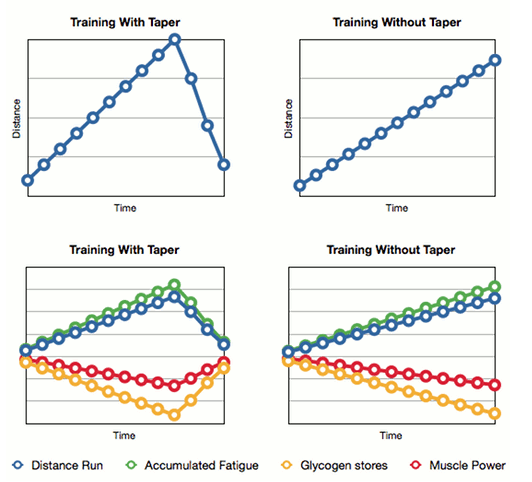Race Tapering: Is It Necessary?
As a runner, there are few things I dislike more than the idea of cutting back before a race. It’s silly, I know. But I like having consistency in my performance and, in the past, I somehow managed to convince myself that continuing training up to 3 days before race day is the key to sustaining that performance…. it’s a pretty common mistake.
Tapering is a very basic principle that every runner has to learn while training for a race. After you’ve built up your base, conditioned your legs, and worked on speed, the idea is that you then have to let your body rest and recover. Everyone tends to have a different take on the duration of rest and the % by which you cut back your training as you approach race day, but the bottom line is the same: tapering improves your performance.
In Lore of Running, Tim Noakes mentions that tapering seems to produce a 3% improvement in performance “regardless of the quality of the athlete or the volume or intensity of the preceding training” (320; 4th ed.) – that’s pretty significant. Although, interestingly, he suggests that any minimal training that you do pursue during your taper period should be done at race pace. I’m assuming that’s only acceptable because the significant drop in mileage compensates for the brief periods of intensity before race day.
Still, for beginners or even some intermediate runners, I would err on the side of caution and just gradually cut back on both mileage and intensity. Besides, tapering also allows for little injuries to heal, ones that might not have been serious enough to interrupt training, but that could have become worse without the cutback in training volume (Daniels 83; 2nd ed.)
So make the most of it. Taper. Trust the training principle that says maintaining fitness is easier than achieving it in the first place. The hard part is over… at least, until race day 🙂
Some Helpful General Resources
Daniels, Jack, PhD. Daniel’s Running Formula. 2nd ed. Champaign, IL: Human Kinetics, 2005.
Noakes, Tim, MD. Lore of Running. 4th ed. Champaign, IL: Human Kinetics, 2001.


